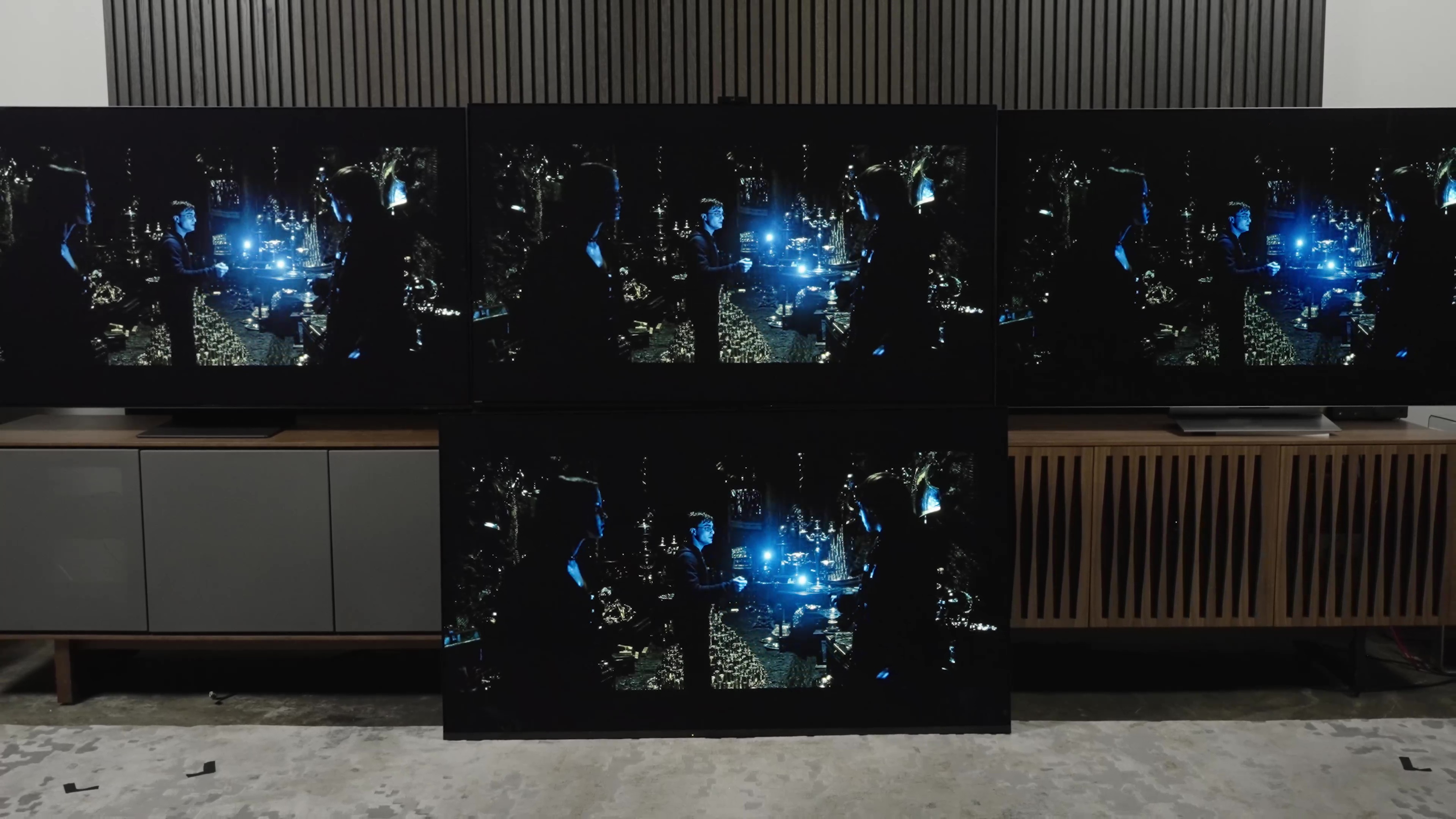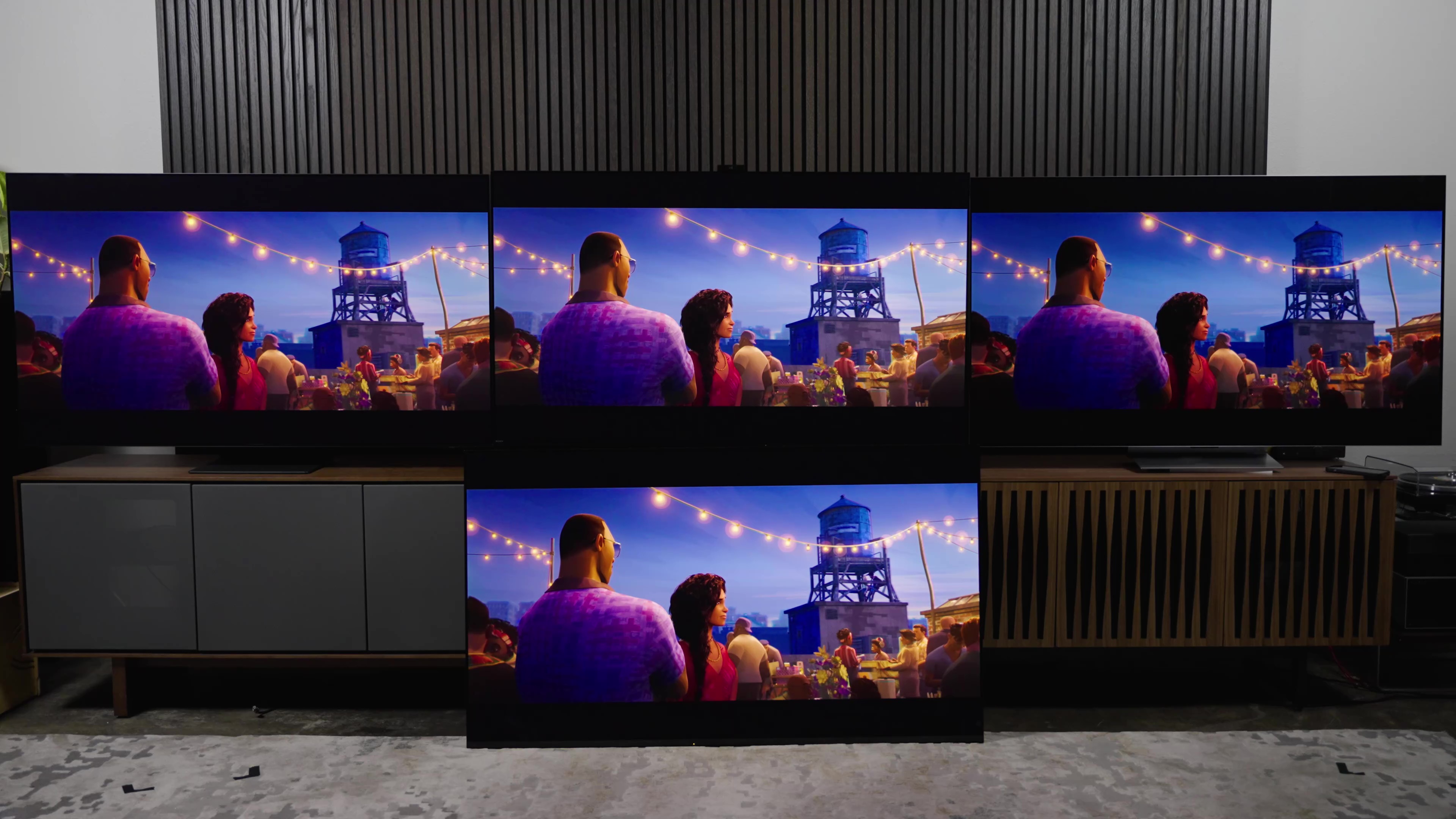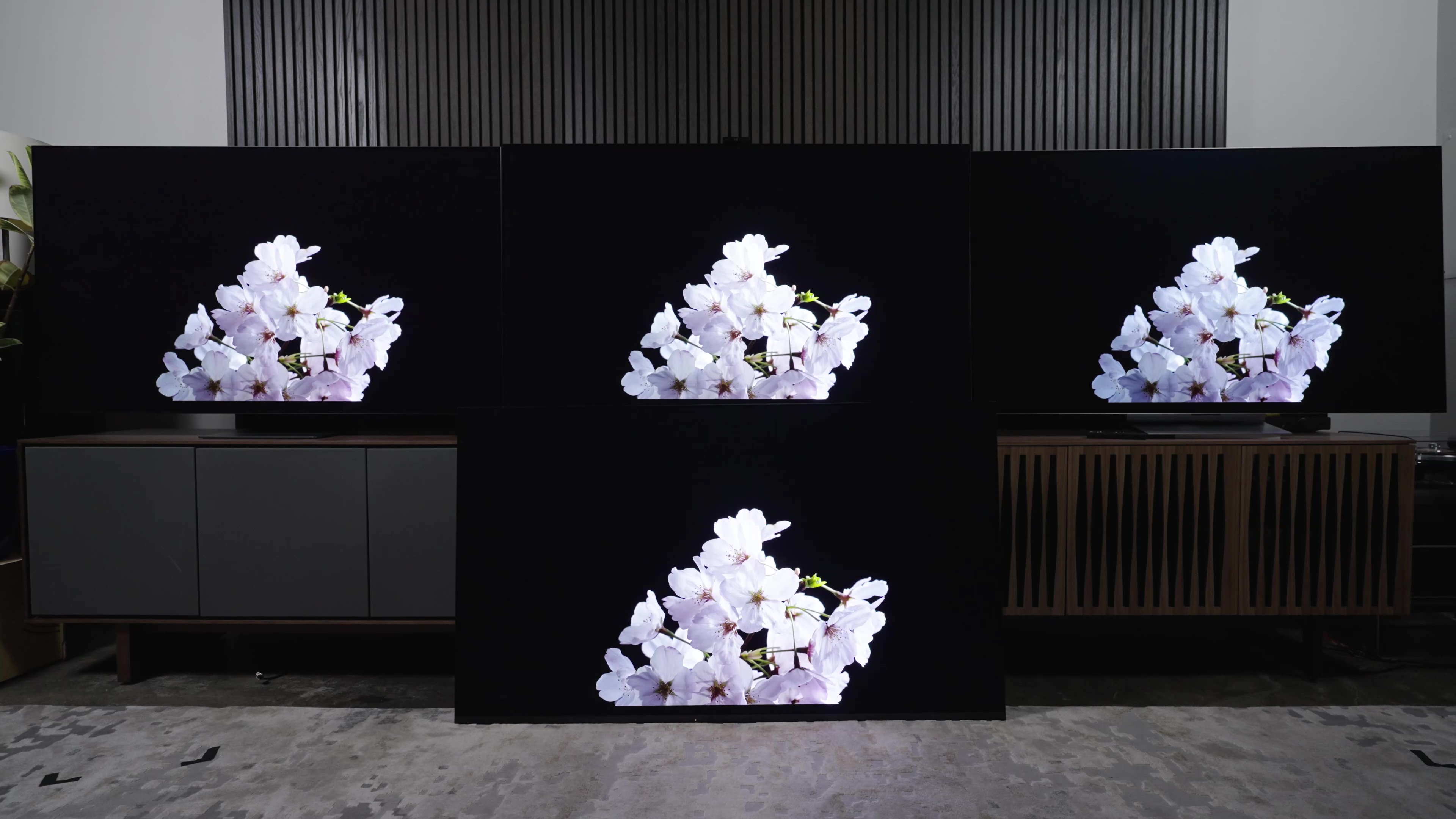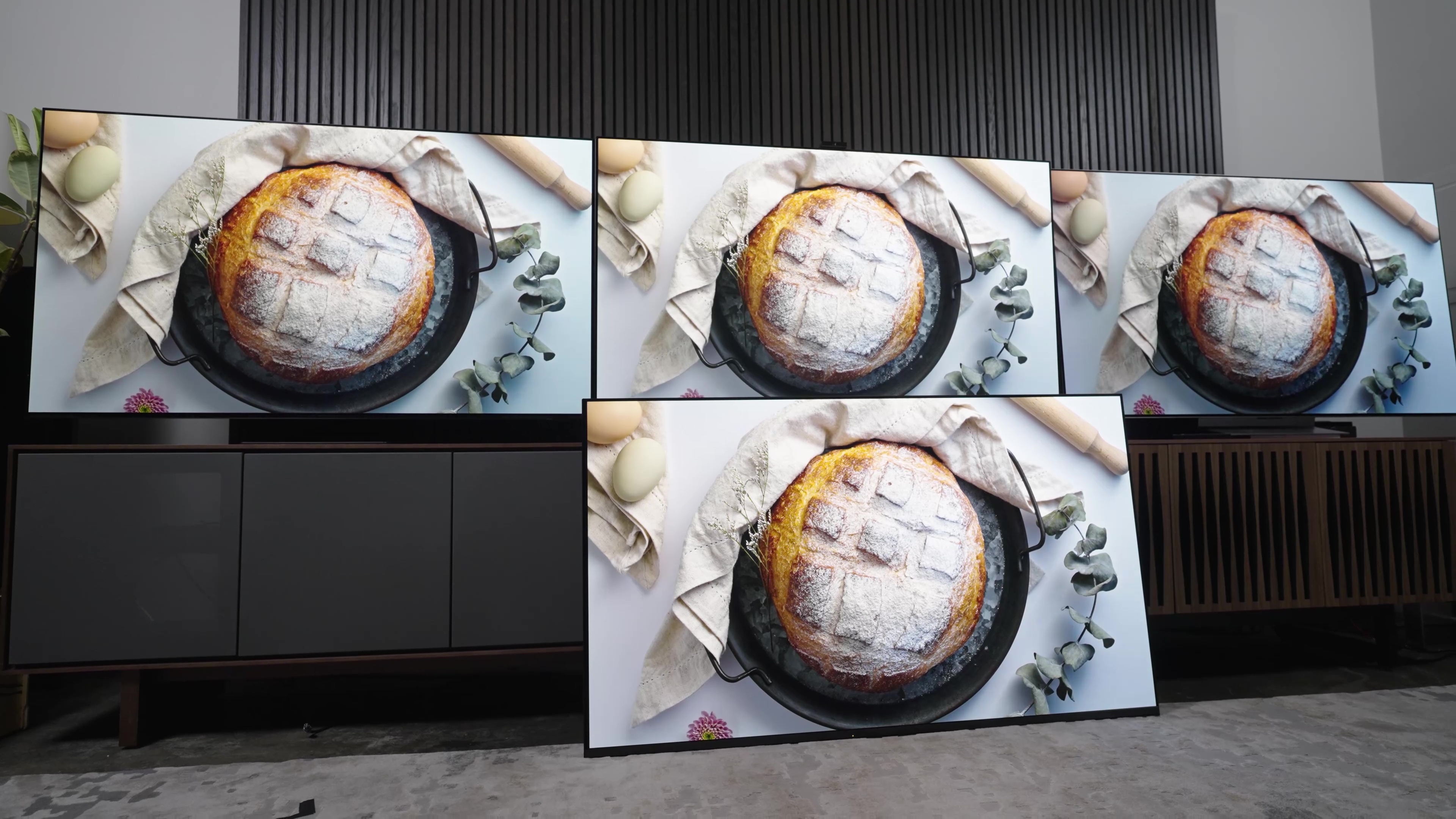TV luminousness has become one of those specifications that the top TV stigma enjoy to vie on . But as well as being a neat identification number they can plastic on their TV boxes and stickers to help market thelatest and nifty TVs , how bright your TV bring forth can also have a real impact on its characterization quality and how dependable it look in different preferences . A high - dividing line , lower - luminosity OLEDmight look awful in your home theater , but it might look drab and wearisome in your conservatory .
telly brightness has ballooned in late years , too . Where 1,000 nits was once an impressive milestone to reach , today that ’s almost a bare minimum for a midrangeQLED TV . Top TVs of today can easily reach 2,000 nits at peak brightness , and last twelvemonth at CES , TCL annunciate a 115 - inch TVwith peak brightness poke up to the 5,000 - nit storey . Not to be outmatch , Hisense announced a 10,000 - nit , 110 - inch TVshortly after . Just opine whatCES 2025will bring .
So , what is with all this brightness talk ? How and why are the brightness war a matter ? What is a nit , and should you even like ? Here ’s everything you need to know about TV brightness .

Small, bright object in an otherwise dark background.Zeke Jones / Digital Trends
We have a nit-uation here
For those of you who did n’t get that objectively dreadful joke , a nit is a unit of measurement of brightness , and it ’s used to express how bright a display can get . Nit is tachygraphy for the much more scientific measurement of candelas per square cadence .
How many nits a display can put out has , for better or spoiled , become a yardstick for timbre .
You may have try about lumens as a measure of brightness and wondered why we do n’t utilize those to boob tube , especially whenyou see projectorswith light capableness express in lm . The reason is that lm are employ to things like lamps or light bulbs and their ability to polish light in all way . nit are used when the light is highly directive . This is why projector lamps are mensurate in lumens , but the brightness coming off a projector concealment is evaluate in nits — just like a television receiver , laptop computer , data processor monitor , or phone .

Small, bright object in a well-lit scene.Zeke Jones / Digital Trends
How many nits a display can put out has , for better or bad , become a yard measure for quality . In some ways that ’s kind of sport . permit ’s talk about how we got to this head .
Looking on the bright side
First , we must notice that brightness is exciting , right ? We know this . human love bright , shiny things . It ’s just built into us . I ’m sure there ’s a rich explanation for that . But for now , all we have to do is recognise this truth .
Contrast is the component of image quality that has , by far , the highest degree of impact .
When it comes to TVs and other exhibit , light plays a office in profile , yes . But in terms of what makes a characterization calculate attractive to us , it ’s the brightness against dark , or contrast , that really lights up our exhilaration . This is because direct contrast is the element of image quality that has , by far , the highest degree of encroachment . You fuck who knew this perhaps better than anyone?Ansel Adams — an American photographer who made a career out of acquire arresting fatal - and - white photograph . Just look at some of his workplace and it becomes clear that color , while quite gratifying , is not required for beautiful imagination . These smutty - and - snowy images are gorgeous because ofcontrast .

Large, bright object on a dark background.Zeke Jones / Digital Trends
In understanding that direct contrast has such a high impact on picture quality , and that cleverness playact a huge purpose in achieving sensational contrast , you may empathise why goggle box brands and TV rooter would get mad at the aspect of TVs that have the capability of achieving higher and gamey levels of smartness . And that ’s where sept like me — TV reviewers and tech journalists — come in .
We have a sort of volaille - or - egg situation die on here . I do n’t know if TV firebrand started it or if TV reviewers and tech journalists started it , but at some power point , how many nits a TV could put out became the most exciting spec to talk about . ( I screw I ’ve been responsible for trump up nit ratings in articles and videos for years now . ) In fact , the nit has become so inextricably link up with enthusiasm for tv that I dub fans of my capacity Nit Nerds and then place about creatinga line of mercharound the steel .
How bright is bright enough?
But where does it end ? How shiny is burnished enough ? Do we really need all this brightness ? At what level will a television ’s smartness morph from asset to indebtedness ?
To answer those questions , we first need to peach about the different ways brightness is used in televisions .
medium Picture Level — or APL — refers to the mean brightness of an image on a display . From the content conception side of thing , we can point to TV show likeGame of Thrones , House of the Dragon , andThe Witcheras present that have a lot of low - APL scenes . In other words , they attend faint to a spate of family . Some may say — and they have — they are sometimes too dark to be watchable .

Large, bright object on a well-lit background.Zeke Jones / Digital Trends
On the opposite side of the spectrum , we have high - APL mental object such asBurn NoticeandDeath in Paradise — sun - dowse shows that are hopeful , vivid , and colorful by nature .
A television that ’s properly set up will make these shows look as the Lord intended . But lots of us just like bright images . So we may crank up the smartness to get a higher APL out of our TV . On the other hand , some of us require our TVs to have a lower APL because we look out in a dedicated dark media room or peradventure at dark in our bedrooms , where a television set set to put out gamy APL would simply be uncomfortable to watch . You do n’t need to be squinting the whole time you ’re watching shows , movies , or secret plan , ripe ?
Most TVs today can be dim so they have a low enough APL to be comfortable . But for those of us who require our TV to be really bright , perhaps because the goggle box is often watched during the day in a sun - soaked room , how shiny a idiot box can get in terms of APL is important .
I think we ’ve all go outside on a sunny Clarence Shepard Day Jr. and had difficulty seeing our phone or laptop screens if they were n’t set to be bright enough , right ? Same slew with your TV inside — or out of doors , come to recall of it . You need your TV to be bright enough to be seeable — let alone have any demarcation — in bright environs . That ’s why outdoor TVs , specially , commercialize their high luminousness as an property .
And then there ’s brightness for the role of display really intense , dazzle HDR highlights . HDRstands for gamey active grasp and , comparatively speaking , is rather unexampled to the world of television set . ( If you do n’t HDR from TVs , you might well know it from telephone set cameras . )
Some common people want a TV to have a eminent peak smartness capability , not because they need the whole projection screen to sear their eyeballs — though some out there do want that and always use the Vivid picture preset on their TVs to get it — but because they want to see that ace - contrasty figure that can only add up from consume very in high spirits - brightness objects in the image . We call the small high-pitched - brightness areas “ specular highlights . ” exemplar might be the Lord’s Day gleaming off the chrome of a car , or a super - vivid candela in an otherwise benighted elbow room .
Some folk music even want a TV that can have a high average picture show levelandstill have enough great power in taciturnity to put out high - impact mirrorlike highlights .
So , we have fundamentally four scenarios that illustrate how brightness level can be used . One may be a small , burnished object in an otherwise dark background . Or a small , bright object in a well - lit fit .
Or , it could be a big , bright object on a moody background — like a moon , or the Death Star . Or it could be a large , bright target on a well - get off background .
That last one — a large bright physical object on a well - lit background knowledge — can be particularly hard to rip off . But when done mighty , it can be downright glaring . specially when you could get that HDR highlight impression in a room with the light on .
I explain all of that in support of two of import points about TV brightness . One : A TV ’s high tiptop brightness power or high nit rating is n’t just about whether it can light up your whole neighborhood on a dark night or sear your retina like the Dominicus itself . It ’s about being able to replicate the kind of spark and contrast we often see in real life . And , two : When we occupy about whether a telecasting will be “ too bright , ” we ’re really distressed abouthowthe TV will expend its light mogul . This leads us to the next vital point of this discussion .
The real question is : Will a TV use its power for good ? Or for evil ?
You know that classic Stan Lee line from Spider - Man : “ With large mogul comes great responsibility . ” And , yeah , perhaps I ’ve overused that trope when spill about TV luminance , but it really does apply . When we bet at TV brands ’ claim about how bright their boob tube can get , it ’s just to get mad . But we should also immix in a sizable amount of scepticism . Because the real inquiry is this : Will a telecasting use its power for safe ? Or for iniquity ?
o.k. , good and immorality may not be the good metaphor here . What I really intend is will a TV beresponsibleabout how it uses its high - light power ? Will it put the king into just the correct spots ? Or will it be a blistering , uncomfortable mess when you watch said TV ?
When Dolby created the spec forDolby Vision HDR , it want the platform to be scalable all the way up to 10,000 nit . That number is not arbitrary . Some scientists probably spent no modest amount of time determining that , in the veracious situations , 10,000 nits was a magic number for HDR highlights in demand situation .
Until lately — think late 2023 — a video achieving up to 10,000 nit vertex output was a tube dreaming . I frankly did n’t think we ’d see a television that could punch that arduous for a few more yr . I was as shocked as anyone that Hisense pronounce it would deliver a 2024 TV that could do so .
It ’s important to sympathise that such a brightness title is tied to a standard that necessitate taking measurements from a very low spot on a cover .
Clockwise flesh top leave , you ’ll see what a 10 % white windowpane look like on a 65 - in goggle box , then a 5 % windowpane , then a 3 % window , and , finally , a 1 % windowpane .
When TCL say its TV will do 5,000 nits , I think that title is based on a examination methodology that sees the TV doing nothing else other than display a white windowpane at either 3 % or even 1 % . Same for Hisense and its claim of 10,000 nits – I ’m uncoerced to bet that ’s a 1 % window where all the TV ’s power is going to this one matter .
Light up the whole television with an paradigm of the beach , sun sparkling off the water , and those specular highlighting are unconvincing to get up to 5,000 or 10,000 nit on those TVs I just observe .
We can presume these new flagship telly … will be able to have both punchy HDR highlights and generally ace - shining screens .
But that ’s true of any TV ’s luminousness rating . That peak light claim is based on ideal condition , with almost no other strain of responsibility on the TV .
However , when we talk about high peak brightness level capableness , we also get laid that the TV can also achieve a tiptop - gamy average scene level relative to TVs that are rat with a lower acme cleverness number . So we can assume these new flagship TVs from TCL , Hisense , and others will be able to have both punchy HDR high spot and mostly super - bright screen .
The question is : Will they do the job well ? And the “ problem ” I ’m referring to is something called tone mapping .
Tone mapping
Tone map has to be think of differently than it used to be .
Until now , the content we got could contain brightness information that was beyond a idiot box ’s potentiality . For model , the movieBatman v Superman : Dawn of Justicewas subdue to 4,000 nits . The disc has information on it that spans from pure blackness all the mode up to 4,000 nits of peak brightness . That 4,000 - nit information is scant — it belike comes up just a few times in the movie , like here .
The thing is , up until recently , there were n’t any TVs that could do 4,000 nit . So , then , what does the television receiver do when it gets book of instructions it ca n’t fulfil ? It does the tone - mathematical function caper .
Tone mapping is the process in which a TV ’s processor has to take the brightness entropy it get from a piece of content — whether that ’s a show on Netflix or a 4 K Blu - beam disc — and make it work on on a TV .
I think the best illustration I can proffer use a swayer or tape measurement . Let ’s say a brightness range of zero to 4,000 nit can be represented by 4 feet worth of a tape measure . That ’s the sign add up from aBlu - raydisc to the boob tube , for example . And each of the piddling lines on the tape meter is increments of brightness — so , we ’ll say each centimetre up the tape measure is just a bit brighter than the one before .
Now , countenance ’s say we have a TV that has a tip brightness of 2,500 nits . The above exposure shows what that would look like on our tape measurement .
The challenge here is to take that 4,000 nit ’ worth of tape measure measure — not just the full length , but the place in - between each of those niggling increments — and surmount it down so that it conform to within a unforesightful space .
So we have to image out how to fit 4,000 nit of range into a 2,500 - nit space . So not only are we going to have to drop the ceiling , so to speak , but we ’re going to need to keep all these increments , so we ’ll have to make the space between those increments short . We ’ll have to make the centimeters closer together .
We ’ve already visualize that how full a boob tube is at this flavor - map job can change wildly .
That ’s what a TV ’s tonicity mapping does . It also has to do this business in black eye . Most of the content we get is mastered to 1,000 nits . And there are band of TVs that can get brighter than that . So the art here is in accept this 1,000 - nit signal and expanding itupto 2,500 nit . So , we now call forth the cap , and we make the space between the increment — the distance between centimeters — greater so that we can have adequate - sized steps from the bottom to the top .
Now , take that theme and scale it up . path up . If most of the cognitive content we can get is at 1,000 nit , then a TV with 5,000 nits is cash in one’s chips to have to do a lot of stretch and descale — smell mapping . A TV with 10,000 nits ? It ’s just doing a bounteous version of that caper , but tone mapping is a little harder .
We ’ve already construe that how respectable a TV is at this tone - chromosome mapping business can vary wildly . Some TVs are exceptionally good at it , while others have left much to be desired . And while company like Sony and LG have historically done a really telling job of tone mapping , it was only recently that Hisense and TCL stepped up their tone - mapping game , and this was when the bet were much lower .
The future looks bright
So , again , the interrogation should n’t be about whether a telly is made to be too bright . The enquiry is whether that telly can use its power judiciously so that we get a good experience out of that brightness , not one that ready us need to squint or put on shade .
I know many of you may have thought : “ I feel like my TV is too bright as it is . Why in the humankind would I want a bright TV ? I ’ll just get savage out of the room ! ”
To you , I would say this : Your TV needs adjustment , or it postulate to do a better chore of tincture map . When a television receiver is doing its thing well , it will keep the APL at a comfortable tier while delivering sparkling HDR highlighting , so you get a gorgeous , high - demarcation , yet well-situated consider experience .
Time will tell whether 2025 television will do aright by us with all this light world power .